-
 Karina
Hi there! Welcome to my shop. Let me know if you have any questions.
Karina
Hi there! Welcome to my shop. Let me know if you have any questions.
Your message has exceeded the limit.

5 Reasons to Use a Thermal Camera for Security Monitoring
2025-07-16 20:20:42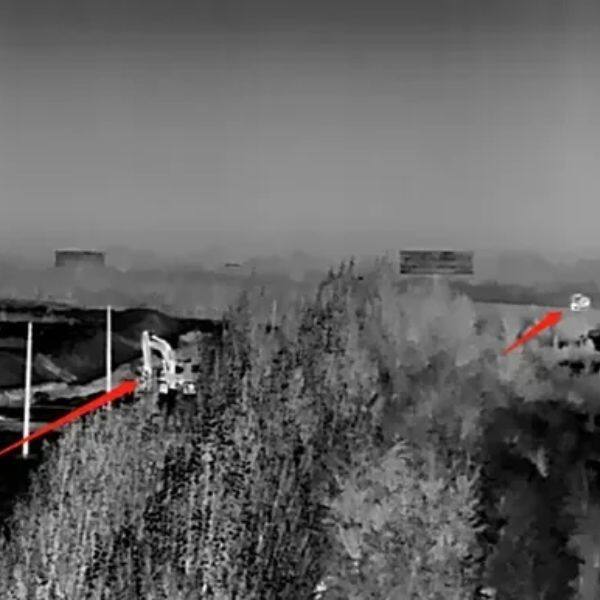
In the realm of modern security monitoring, technological advancements continuously provide us with more powerful and reliable tools to protect property and people. Beyond traditional visible-light cameras, thermal cameras are increasingly becoming the preferred choice for many critical security applications. They don’t rely on visible light; instead, they “sense” the infrared radiation emitted by objects, which gives thermal cameras significant advantages in various challenging environments.
This article will detail the five core capabilities of infrared thermal cameras for security monitoring, revealing why they’ve become such a powerful security asset.
Why Use a Thermal Camera for Security Monitoring?Unlike traditional surveillance equipment that relies on visible light or requires additional illumination, infrared thermal cameras create images using the heat radiation emitted by objects themselves. This fundamental difference gives them numerous advantages in the field of security monitoring:
1. Reliable Identification in Darkness and Harsh WeatherUnlike traditional surveillance systems that rely on visible light, infrared thermal cameras detect infrared radiation emitted by objects themselves. This gives them a distinct advantage in low-light or no-light conditions.
Furthermore, while atmospheric conditions, smoke, and haze can absorb visible and near-infrared light, they are transparent to infrared radiation in the 3-5µm and 8-14µm wavelength bands. These are known as the “atmospheric windows” for infrared. By leveraging these windows, thermal cameras can operate consistently in low-visibility environments like nighttime, dense fog, or heavy smoke. They precisely identify target outlines and heat signatures, enabling “all-weather, all-hours” security monitoring.
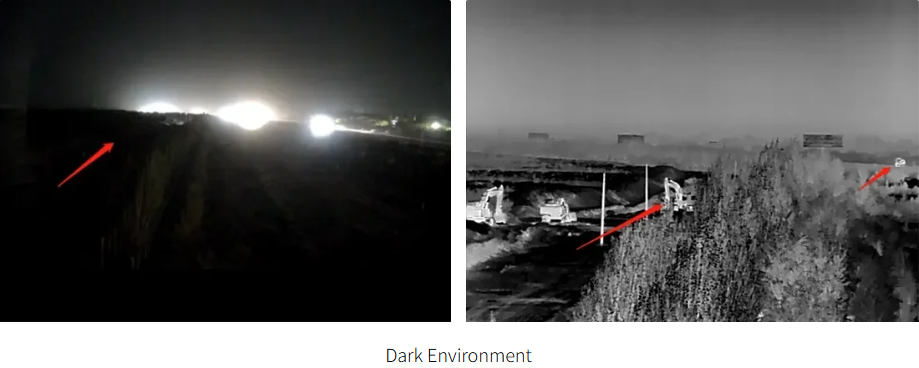
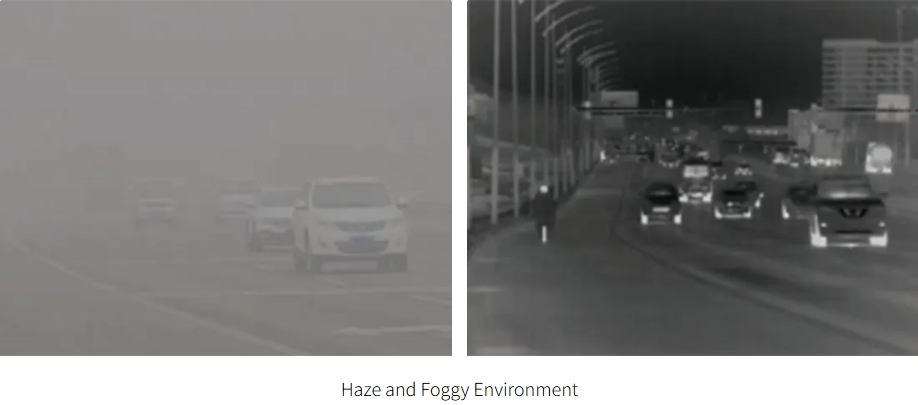
Infrared thermal cameras passively receive infrared energy radiated by target objects and do not emit any signals. This detection method eliminates the risk of being discovered by the subjects under surveillance. Compared to active radar or laser detection, thermal cameras’ “undetectable imaging” nature is inherently covert, making them ideal for scenarios requiring a high degree of discretion.
3. Accurate Identification of Camouflaged and Concealed TargetsAny object with a temperature above absolute zero emits infrared radiation, and infrared thermal cameras form clear thermal images based on these temperature differences. Even if people, animals, or vehicles are camouflaged within bushes, tall grass, or shadows—making them difficult for traditional cameras to detect—a thermal camera can keenly identify “thermal anomalies” that are warmer than the environment. Even if a target’s color matches the background, it can’t escape “thermal vision” detection. This offers a significant advantage in preventing illegal intrusion and protecting critical area perimeters.
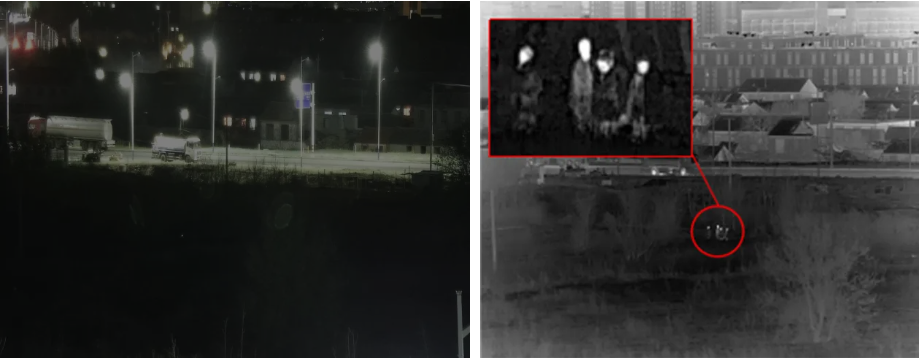
Infrared thermal cameras form images by detecting the heat radiation emitted by objects themselves. This allows them to maintain clear imaging even in environments where visible light fails, such as in backlight, strong light, or complete darkness, effectively compensating for the shortcomings of traditional surveillance. Additionally, infrared radiation has a much stronger ability to penetrate atmospheric obscurants like fog, rain, and snow than visible light, further enhancing reliable long-distance detection.
Since they don’t require contact and have strong electromagnetic interference resistance, thermal cameras can consistently acquire thermal images even when targets are moving or in complex environments.
Leveraging high-sensitivity infrared detectors, thermal cameras can capture heat sources from hundreds of meters to several kilometers away, making them suitable for large-scale applications like border patrols, forest fire monitoring, airport security, and high-altitude unattended detection.
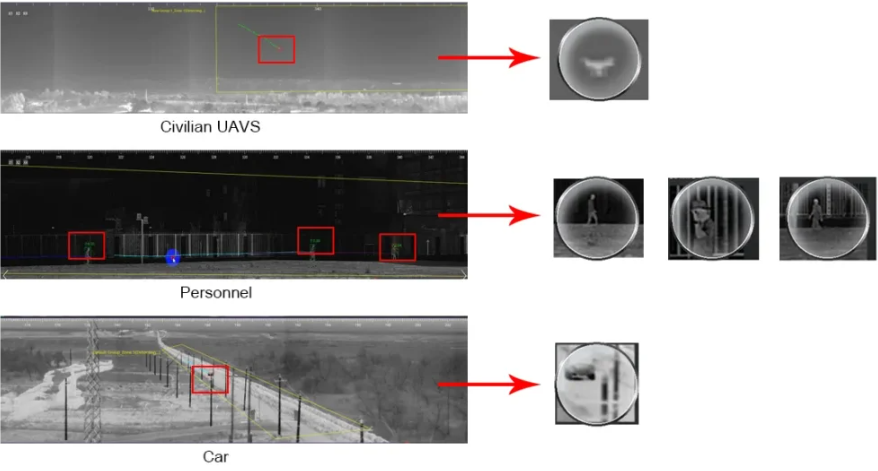
In the initial stages of a fire, temperature changes are often the earliest indicators. Infrared thermal cameras can sense surface temperature fluctuations in real time, keenly capturing early thermal anomalies. They automatically trigger alarms when thresholds are exceeded, providing warnings for events like forest fires or electrical overheating, thus containing potential fires in their infancy.
Should a fire break out, thermal cameras can also see through dense smoke to quickly pinpoint the source of the blaze. Furthermore, their sensitive recognition of human heat signatures aids in search and rescue operations in low-visibility environments, significantly boosting emergency response speed and rescue safety.
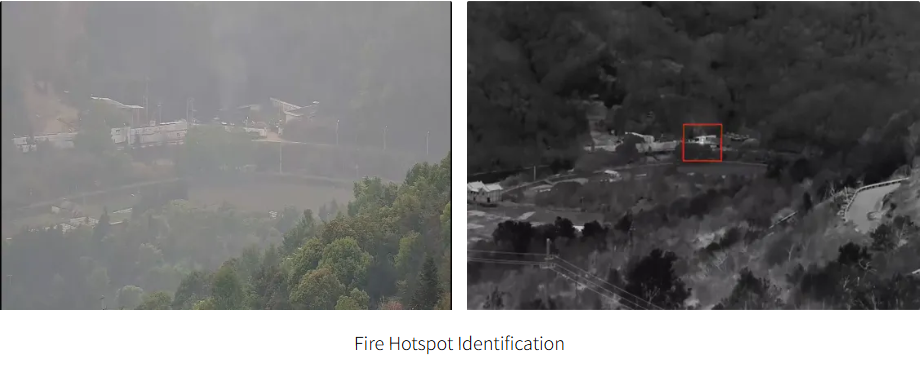
Because they offer five core capabilities—day and night identification, covert detection, camouflage penetration, long-range monitoring, and early fire warning—infrared thermal cameras are becoming an indispensable and critical component of modern security systems.
As infrared technology continues to evolve, thermal cameras are performing even better in security monitoring. High-sensitivity, high-resolution detectors enable more precise target identification. The integration of advanced image processing techniques like multi-scale analysis, background compensation, contrast enhancement, noise reduction, and super-resolution algorithms has significantly optimized imaging quality and real-world surveillance effectiveness.
In terms of hardware, thermal cameras are rapidly moving towards smaller, lighter, and more integrated designs, making them more flexible to deploy, cost-effective, and adaptable. Furthermore, infrared thermal technology is integrating with other sensing technologies like radar, UV, acoustic, and spectral detection, providing robust support for building “all-weather, multi-dimensional intelligent security systems.”
If you’re looking for high-performance, reliable thermal camera products to enhance your security system, feel free to explore our product series. As a manufacturer focused on thermal imaging technology, we offer a range of thermal camera products designed to meet diverse monitoring needs in demanding environments. From perimeter protection to critical area surveillance, our solutions can help you achieve a higher level of security. If you have any questions, please don’t hesitate to contact our expert team for consultation!
Tags: Thermal Camera, Security Camera, Long-Range Monitoring Camera

